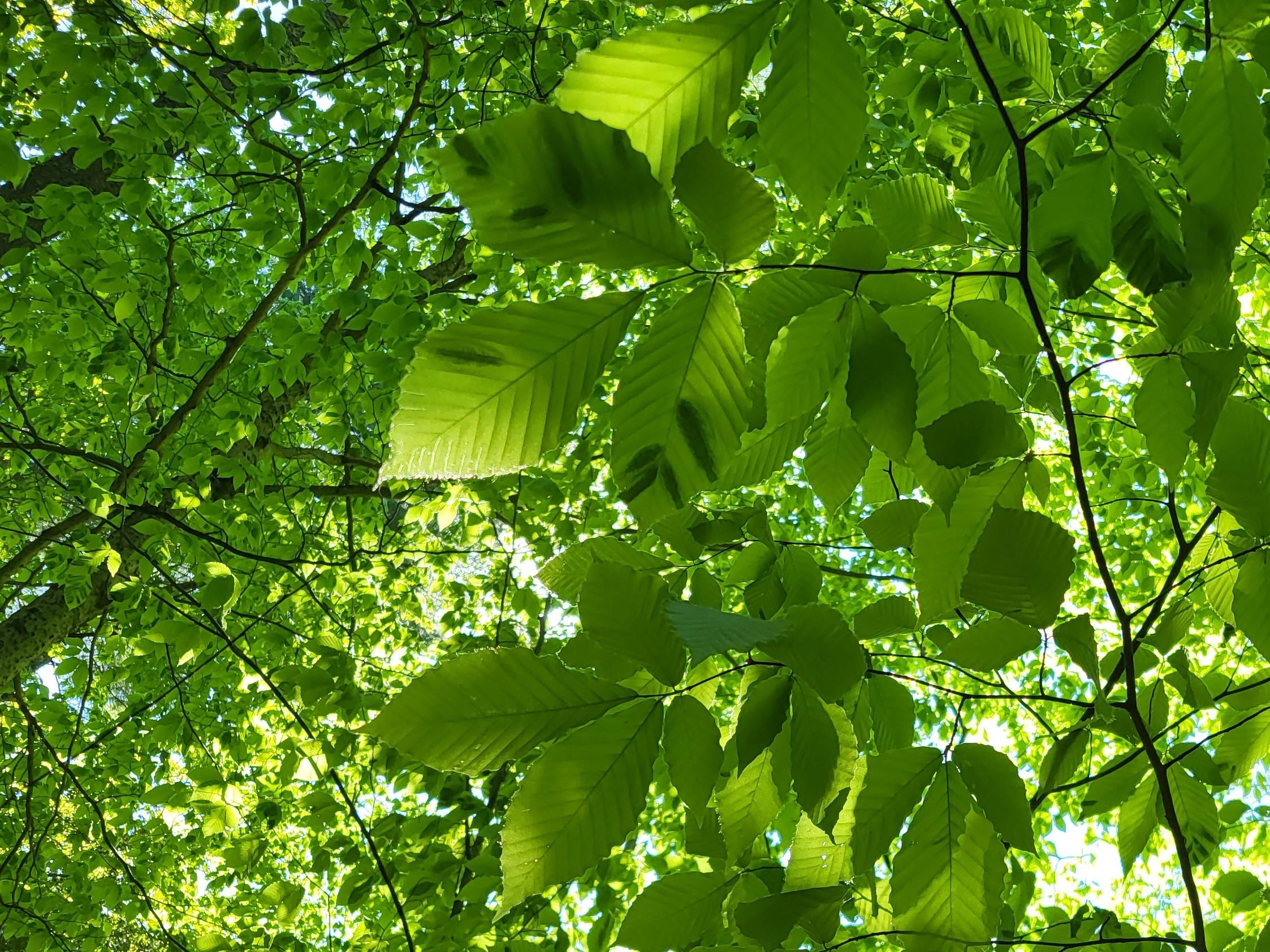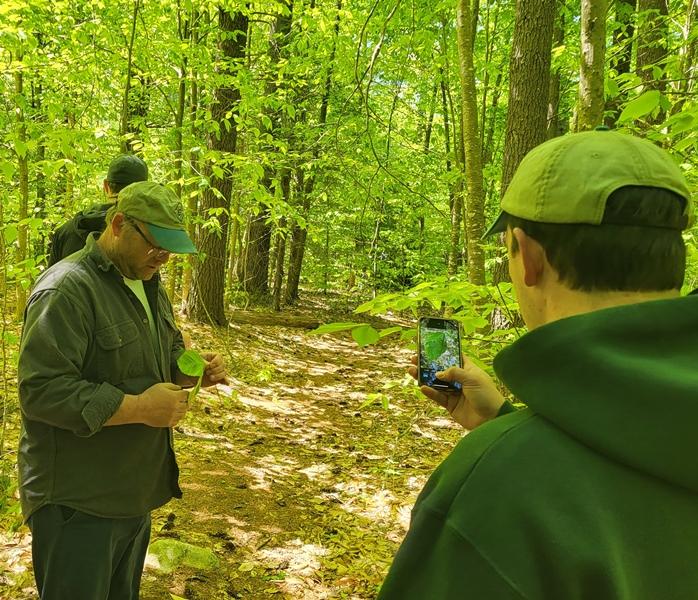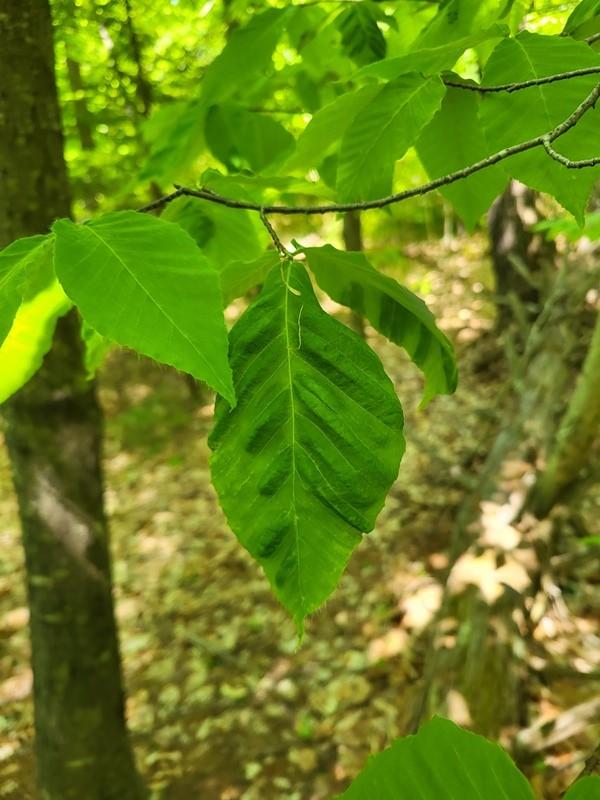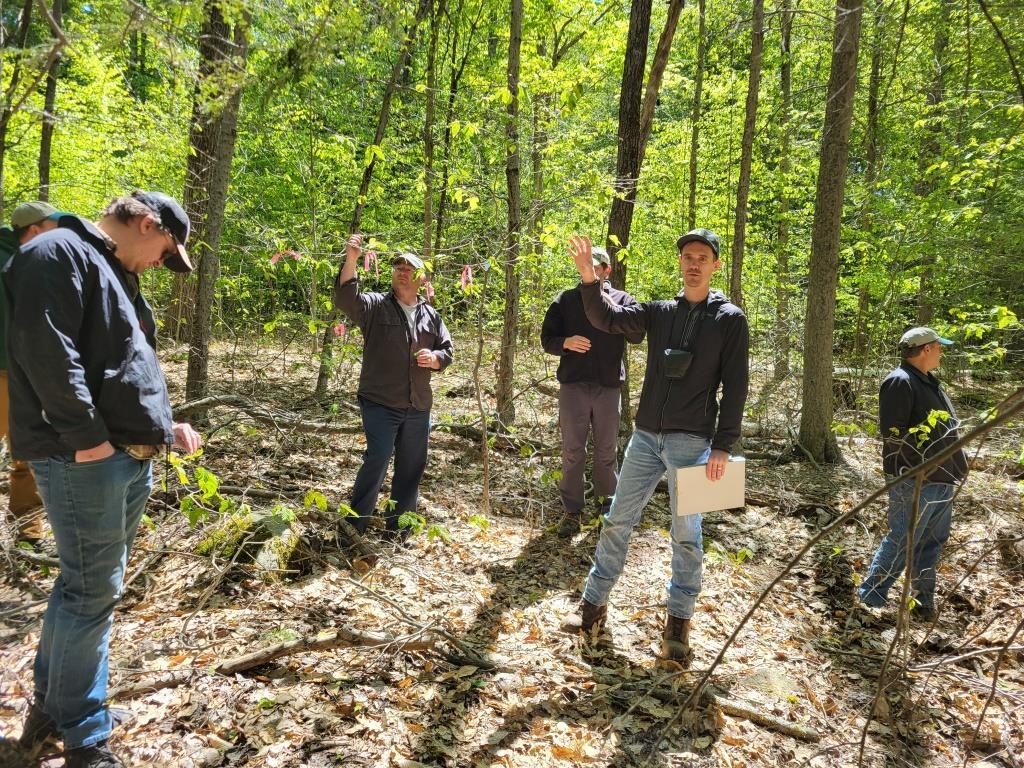- Tags:
- Forestry

Forest Society Foresters Wendy, Steve and Gabe all recently attended a field visit to Bear Brook State Park to see the beech leaf disease outbreak there. This was one of the first locations it was detected in New Hampshire just last year. The attendees included members of the Forest Pest Advisory Group and Invasive Species Committee. The first signs of the disease as we got closer to the epicenter became obvious: dark banding occurring between the veins of the leaf. They were best viewed from below the tree looking up at the sunlit leaves.

Since beech trees are tolerant of shade they can be found growing as a thick layer of young trees not far off the ground. Being this close to the ground aides in viewing the leaves up close.


Larger trees take longer but eventually do succumb. Unfortunately beech trees in New Hampshire are more vulnerable to this disease as many of them are already stressed from Beech Bark Disease. More locations are popping up in New Hampshire each season as the disease progresses. Locations currently known are Derry, Deerfield, Durham and Farmington.
- The public is encouraged to look for signs of the disease and report those findings to www.NHBugs.org.
- To view the information about the pest check out this link: https://www.nhbugs.org/damaging-insects-diseases/beech-leaf-disease
